Ann Agnes Bernatitus
Contributors
- Caitlynne Holdaway
- Matt Swenson
- Tara Baer
Editors/Reviewers
- Sean N. Bennett, RN, MSN - Associate Professor - Utah Valley University - Orem, Utah
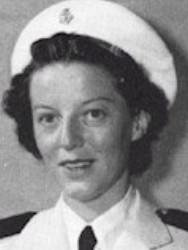
Early Life (1912-1928)
Ann Agnes Bernatitus, a Navy Nurse, was born on January 21, 1912 in Exeter, Pennsylvania. She is the daughter of Alexander and Margaret Bernatitus, both Lithuanian immigrants. Ann had three siblings who were all close in age and she was the second child born. She had an older brother named Thomas who was born two years before her in 1910. She had another brother named Alexander who was born in 1916, and a sister named Alberta who was born in 1919. They all grew up in a house that their parents built in 1905. She received her education in the Exeter public schools, graduating from high school in 1928. Ann’s father died when Ann was seventeen years old, in 1929. When asked when she decided she wanted to be a nurse, she said: "I always wanted to be a nurse. There was nothing else for girls to do in those days but be a school teacher or a nurse. My parents couldn't afford to send me to college. My school friend, whose mother was a widow, told my mother, who was also a widow, to let me go for training. My mother then decided to let me go for training locally."
Nursing School
Nursing education in the early 1900s began to be more diverse, with nurses specializing in different areas. Some nurses were even allowed to administer anesthesia during surgery (“American Nursing: an Introduction to the Past”). In the 1920s and 30s, hospitals were growing rapidly and were starting to hire more nurses who were properly trained and graduated with a proper degree. These qualified nurses were called “staff nurses”.
After graduating high school in 1928, Ann got into nursing school and went on to nurses training in 1931. This training was done at Wyoming Valley Homeopathic Hospital located in Wilkes Barre, Pennsylvania (Henry Gaidis). This hospital was founded in 1911, not too much earlier than when Ann attended. The building itself, never had more than 108 bed capacity and the hospital was known for its homeopathic ways of medicine. Homeopathic medicine studied the complete health of a person rather than just focusing on the single injury or illness and was a not too popular practice during that time. (“A Home for Homeopathy”)
Graduated in 1934, Ann had troubles finding a job due to the Great depression that was occurring. Because of this, she decided to do a postgraduate course on operating room technique. This training took place at the Pennsylvania Graduate Hospital, located in Philadelphia, Pennsylvania (Henry Gaidis). Founded in 1916, this hospital served many patients in its time. The area surrounding the Hospital is now known as Graduate hospital and is a neighborhood for many people in Pennsylvania (“Graduate Hospital”).
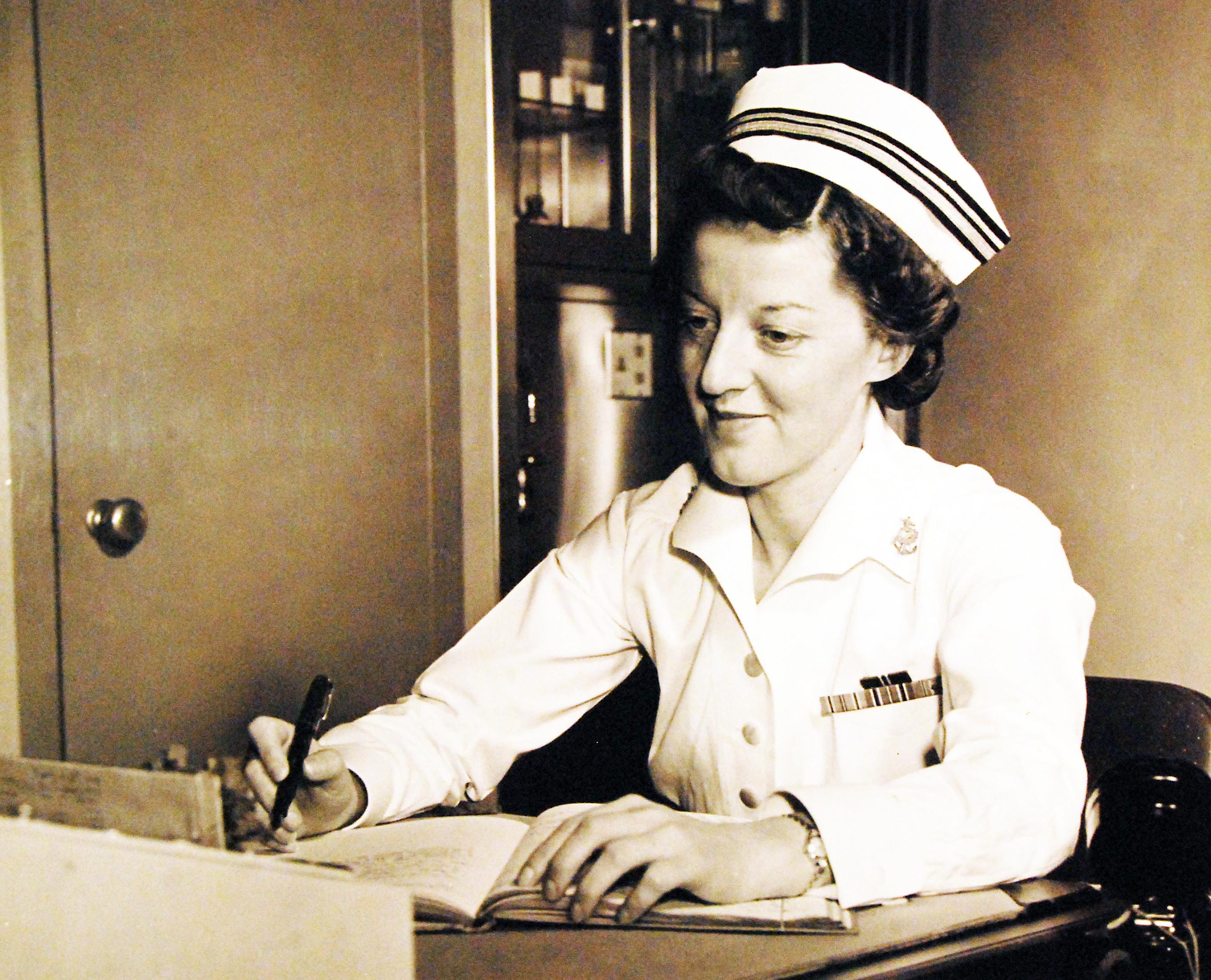
Nursing Career
While she was attending a course at the University of Pennsylvania, she saw an ad in a nursing magazine that said they could find her a job so she applied. She was able to secure a position on the hospital's nursing staff. She worked there from February to May 1935, followed by a similar position as a staff nurse in the operating room at the New Rochelle Hospital, New Rochelle, New York, and as an operating room supervisor at the Nanticoke State Hospital, Nanticoke, Pennsylvania. She took the job at the Nanticoke State hospital mainly because her mother felt better that she was close to home and not out in the big city. One of Ann's hospital superintendents had served in the US Army during World War 1 and spoke favorably of military nursing, so she applied for a position with the U.S. Naval Nursing Corps. On September 25, 1936, Ann was appointed an Ensign in the U.S Navy Nurse Corps.
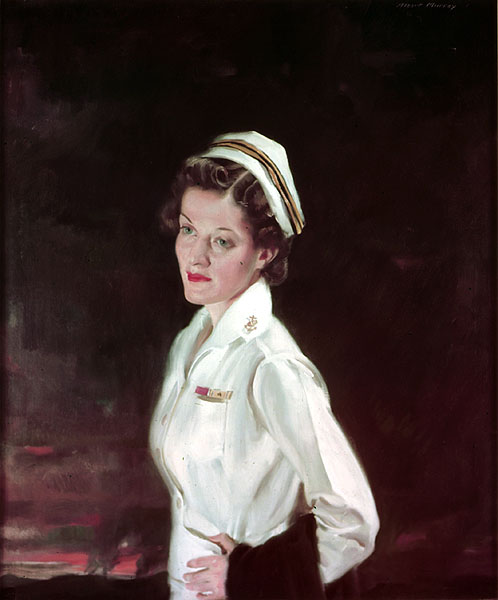
Military Career
After receiving her appointment in the Nurse Corps in 1936, She reported as a staff nurse at the Naval Hospital, Chelsea, Massachusetts. She said this about her time in Chelsea: "I was there the first 6 months. Then the Navy would decide whether to keep you or throw you out. New nurses were coming into the Corps roughly every 2 to 4 weeks. I found myself supervising the corpsmen and keeping the books. Every morning you went on duty and had to count all the blankets, the thermometers. I think we had to count the glasses. And then you had to scrub the floors. You had to keep the curtains at the windows just so"
In September 1937, she was transferred, in a similar capacity, to the Naval Hospital, Annapolis, Maryland. She remained there until March 1940, after which she had duty as a nurse on the USS Chaumont. She left the United States by naval transport from Norfolk, Virginia, via the Panama Canal, and made a brief stop to drop some U.S. Marines off at Midway Island. Ann arrived in Canacao, Philippines in July, 1940, and was assigned to the U.S. Naval Hospital, Canacao, and Philippine Islands. She was immediately impressed by the easy lifestyle enjoyed by the American personnel stationed there. She was one of twelve nurses assigned to the Naval Hospital where the work was easy and there was plenty of time to enjoy golf, bicycling, swimming, and the officer club. Manila was only a ferry boat ride away where one could get anything found in the U.S. at a reasonable cost.
Though there had been talk about war in Europe for some time, Ann was surprised to take a 6:00 phone call from a friend telling her that war had been declared. It was only then that she learned of the December 7th, 1941 attack on Pearl Harbor. Because of the location of the hospital, it soon became necessary to evacuate the patients and newly arrived wounded to Manila. During the work, she was a member of an emergency operating team working under Army orders.
Battle of Bataan
In 1940 the attack on Pearl Harbor took place and Ann was sent to Manila where she worked more hands on with the patients. She worked at Sternberg Army Hospital where the more serious cases were sent. According to Ann, the working conditions were not the best. She said "Every operating table would be filled. They would come in from the field all dirty. You did what you could There were lice; I kept my hair covered all the time” There were no rooms or even screens to separate the patients. It was just open space. However, the operating room was located in its own building. She worked long hours with many patients all during the bombings of the American field hospitals that were in the area. One of the bombs made a direct hit on one of the wards of the hospital but Ann continued to work through it all. Some days she would treat at least 250 patients non-stop in just an eight-hour shift. While working, the nurses and doctors did as much as they could to keep everything sterile. She said “The instruments were sterilized by placing them in a foot tub filled with Lysol, then rinsed in alcohol. The period of sterilization depended on how fast they were needed.” If they had a lot of patients come in at once, then they had to do a simple sterilization so that they could have to tools they needed to treat the patient. They didn’t have a lot of resources during the war and a lot of the time they were reusing their dressings. Ann said “We were washing the dirty dressings that they used during an operation. We would wash them out and refold and sterilize them and use them again.” We are lucky that we live in a time today where we have enough resources and equipment available that we don’t have to worry about sterilizing dressings to use on the next patient.
Ann's Escape
The worsening state of the battle lands alarmed the current president of the United states, President Roosevelt, and he ordered General MacArthur to lead an evacuation attempt for chosen personnel, which included the nurses. Because Ann was on the list of people to evacuate she was able to leave that horrid place. “She recalls being ordered with others to meet in front of Wainwright’s headquarters where someone began reading out names. As your name was called, General Wainwright shook your hand and wished you Godspeed.” She continues, “He told the departing, ’Tell them how it is out here.’ and then drove off” (Gaidis, Henry). After this farewell they went out of the tunnel, onto small boats, and were taken to submarines.
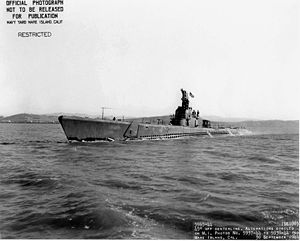
U.S.S. Spearfish
Their travel on the submarines was slow with all effort being taken to conceal their movement. Ann later learned that Corregidor had fallen during their escape and the Japanese forces were everywhere. She said "Finally we saw this dark shape and we came alongside of it. You could hear the slapping of the water between the two objects. Then someone said ‘Get your foot over the rail.’ And then someone just pulled me, and then the first thing I knew I was going down the hatch. I got down there awfully fast.” Altogether, over 20 people accompanied Bernatitus. “When they first said 17 days [the length of the trip to Fremantle, Australia], I thought I couldn’t make it. But I did,” Ann continues. “They took us into the officer’s mess. That’s where we sat and they gave us tea and chocolate cake. We hadn’t seen chocolate cake and tea in a long time. The chefs gave up their quarters for us. It was just a cabin with a sink in it.” She shared the space with three other women. “Our luggage we brought with us was on the deck in that same room. I was one of the four picked to go to bed right away. The next morning when my 8 hours were up four others went to sleep. You just had to kill time any way you could. Most of our time was spent in the crew’s mess. Someone had a Victrola that was playing all the time. The crew would come with magazines they had stashed away someplace. We would sit and talk. The crew was fed first. Anything they served was wonderful for us. We hadn’t seen food like that. Down in that submarine, the only thing you heard was the sound of the screws turning. “You know, while we were on that submarine we remained submerged during the day and at dusk we would surface to charge our batteries. When we came up we came up at an angle…. And then someone opened a hatch and we felt this gush of nice fresh air come through. We had hardly done this when whish, down we went again. Well, that was an experience. They thought they sighted something. Everything was turned off and everybody was sitting around doing nothing. We must have been submerged for several hours just barely crawling. But everything turned out okay.” After a 17-day submarine trip through enemy infested waters, she arrived in Australia and then returned to the United States. According to text from the Naval History and Heritage Command, “During this time of escape, she [Ann] was listed on the Navy Department records as “missing in action.””
Return to the United States
When she first returned to the United States, she was promoted to chief nurse, and in July 1942 was assigned to the Naval Medical Center, Bethesda, Maryland. In August 1943, she became chief nurse at the Naval dispensary, Eighth Naval District, headquartered in New Orleans, Louisiana. From June to November 1944, she served at the Naval Hospital, Great Lakes, Illinois, after which she had temporary duty as assistant chief of nursing services at the Naval Hospital, Treasure Island, San Francisco, California. In February 1945 she joined the USS RELIEF(AH-1) as chief of nursing services and in the capacity, participated in the Okinawa Invasion and helped those who were wounded during the operation. This is what she had to say about one of her experiences "On the 28th [August] we were enroute via Okinawa for Dairen, Manchuria to pick up the prisoners of war. We were escorted by the destroyer escort McNulty (DE-581) and the Eugene Elmore (DE-686). We picked up a Chinese man and woman. The next day the Relief was guided past 10 floating mines. One crewmember of the McNulty was injured by shrapnel and transferred to the Relief but he died. At 9:18 we docked with no help from anybody. It was not till the 11th [September] that the prisoners come aboard, 753 of them. That was really something. First of all, music was blaring from the ship and everything was all lighted up. Well, they didn't let them come right aboard. They had to be deloused first--fumigated and then given showers. Then they came aboard at 2050. I remember the supply officer who was in charge of food, came to me and said that the senior medical officer was going to give them sandwiches and I said, "Listen, if you can't give them a steak dinner and ice cream or something, we ought to be ashamed of ourselves." They would stand in line waiting from one meal to the next and they ate bread. The men were up on the SOQ (Sick Officers Quarters). The galley was in the middle and my office was to the left of it. Because all the bread and butter were on my desk, they reached in to get bread and butter, then with their trays they would go through the galley to load up, and then go out to their bunks." Detached from the hospital ship in November 1945, Ann was next assistant chief of nursing services at the Naval Hospital, Brooklyn, New York.
Post Military
Ann retired from the Navy in 1959. She retired as a captain and served 23 years. Ann moved back to her childhood home in Exeter, Pennsylvania. In an interview conducted by the Bureau of Medicine and Surgery in 1994, Ann stated that “Nobody has lived here but the Bernatitus family”. She continued to live there after her parents had passed away in 1929 and 1962.
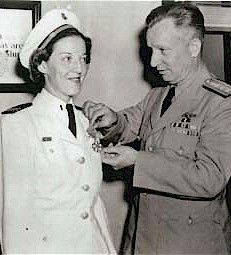
Awards
In 1942 a new award was created called the Legion of Merit award. This award is given to members of the military for “exceptionally meritorious conduct in the performance of outstanding services and achievements” (Naval History and Heritage Command, 2016). Ann was the first member of the United States Armed Forces and the first woman to receive this award. She was given award “as a member of Surgical Unit #5 during the bombing of the Philippine Islands by enemy Japanese forces for the period of December 1941 through April 1942. Constantly in the front lines of defense in the Manila-Bataan Area, and on two separate occasions forced to evacuate to new positions after Japanese bombs had wrecked the Surgical Unit, Nurse Bernatitus courageously withstood the dangers and rigors of tropical combat, rendering efficient and devoted service during the tense days of prolonged siege and evacuation” (Naval History and Heritage Command, 2016).
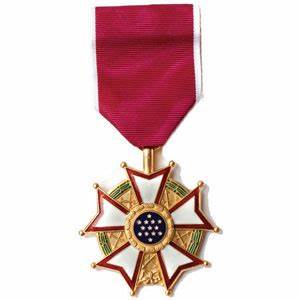
Legion of Merit Citation
The President of the United States of America takes pleasure in presenting the Legion of Merit with Combat "V" to
Lieutenant, Junior Grade Ann A. Bernatitus (NSN: 64916W) United States Navy
For exceptionally meritorious conduct in the performance of outstanding services to the Government of the United States as a member of Surgical Unit No. 5 during the Japanese attack on the Philippines, December 1941 through April 1942. Nurse Bernatitus maintained her position in the front lines of the Manila-Bataan area rendering efficient and devoted service during the prolonged siege. Miss Bernatitus was regularly attached to the Naval Hospital, Canacao, Philippine Islands having reported for duty there on 20 July 1941. Shortly after hostilities commenced in December 1941 the Naval Hospital Staff and patients were moved to a new establishment in Manila. On 24 December 1941, when Manila was being evacuated Miss Bernatitus accompanied by two Navy Medical Officers proceeded to the Army Hospital at Limay, Bataan. The remainder of the hospital staff stayed in Manila and were taken prisoners. On 25 January 1942, Miss Bernatitus was transferred to Army Field Hospital No. 1 at Little Baguio, Bataan and remained there on active duty until that hospital was destroyed by enemy bombing on 7 April. When Bataan fell Miss Bernatitus was transferred to Corregidor. During her stay in Bataan she worked directly under Lieutenant Commander C. M. Smith (MC), USN, who is now a prisoner of war. The conditions under which the nurses lived and worked lacked everything in the way of comfort. They were constantly exposed to enemy bombing attacks and experienced several as well as the endemic jungle diseases of that area. Miss Bernatitus suffered from both dysentery and beriberi during her tour of duty in Bataan. In spite of all difficulties Miss Bernatitus performed her duty in an exemplary manner with courage and good spirit. She was officially transferred from Corregidor three days before the surrender of that fortress. (Lieutenant, Junior Grade, Bernatitus is authorized to wear the Combat "V".)
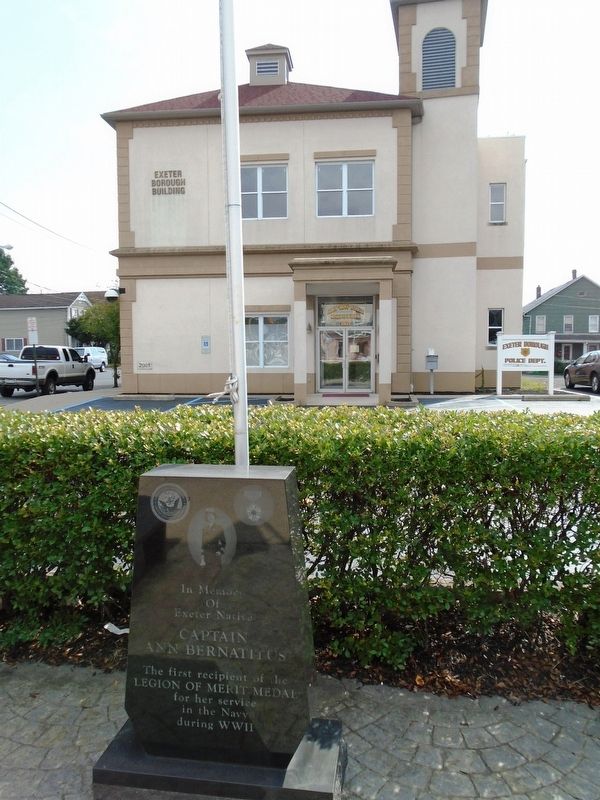
On June 23, 2007 a monument was revealed in her honor in her home town at the Exeter Borough Building. There is also a painting of her that hangs in the Pentagon and her Legion of Merit medal has been donated to the Smithsonian Institute to be viewed daily by many people.
Other Awards and Medals
Over the years of working and serving in the many different wars, Ann Bernatitus was able to earn several medals and awards, each with its own special meaning and honor. Her hard work was recognized by many people over the decades she worked as a nurse. These awards include:
- Legion of Merit award (as mentioned before)- This award was received by her as the first one of its kind. This award was made for those that served in the war but were not in combat.
- American Defense Service Medal, Base Clasp- The meaning behind this medal is for pre-war and foreign service. The Base clasp is “issued by the U.S. Navy and United States Marine Crops for service outside the continental limits of the United States” (American Defense Service Medal).
- Asiatic-Pacific Campaign Medal with two stars- This is given by providing “service in the Asiatic-Pacific Theater for 30 days or receipt of any combat decoration” (Welcome To Medals of America).
- World War II Victory Medal- Its name says why it is awarded, “service in the U.S. Armed Forces” between the 7th of December 1941 to the 31st of December 1946.
- Navy Occupation Service Medal- This award is presented to people that worked in the navy, marine corps, or coast guard during World War II.
- China Service Medal- Again, by its name, it was given to those that served “ashore in China or on-board naval vessels” during 1937-39 or 1945-57.
- Philippine Defense Ribbon- It was “awarded for combat service in the defense of the Philippines from 8 Dec 41 to 15 Jun 42”. The people that received it were members of the Bataan or Manila Bay forces (including on ships or airplanes), or in the Philippine waters for at least 30 days during that time period.
- Philippine Liberation Ribbon- Given to participants in the Philippine liberation from the 17th of October 1944 to the 3rd of September 1945. The people that received it had to have participated in the initial landing on Leyte or close islands, were involved in any engagement against the enemy during campaign on Leyte, and served in the Philippine islands or on ships for at least 30 days during the time period stated.
- Philippine Independence Ribbon- Awarded for having received the Philippine Defense and Liberation Ribbons.
References
- “A Home for Homeopathy.” Times Leader, 9 June 2015, www.timesleader.com/archive/157432/news-local-news-news-1439567-a-home-for-homeopathy.
- “American Defense Service Medal.” Atlantikwall - Batterie D'Azeville - Azeville - TracesOfWar.com, www.tracesofwar.com/awards/266/American-Defence-Service-Medal.htm.
- “American Nursing: An Introduction to the Past.” • Nursing, History, and Health Care • Penn Nursing, www.nursing.upenn.edu/nhhc/american-nursing-an-introduction-to-the-past/.
- Ann Agnes Bernatitus (1912-2003) - Find A Grave... (n.d.). Retrieved from https://www.findagrave.com/memorial/62879215/ann-agnes-bernatitus
- "Ann Bernatitus - Recipient - Military Times Hall of Valor" - https://valor.militarytimes.com/hero/307009
- A. (2017, November 04). Navy Nurse LT(JG) Ann Bernatitus. Retrieved from http://womenofwwii.com/navy/navy-nurses/navy-nurse-ltjg-ann-bernatitus/
- “Bernatitus, Anne Agnes-Text.” Naval History and Heritage Command, www.history.navy.mil/research/histories/biographies-list/bios-b/bernatitus-anne-a/bernatitus-anne-a-text.html.
- Full text of "Interview with CAPT Ann Bernatitus, NC, USN, (Ret.), World War II nurse". (n.d.). Retrieved from https://archive.org/stream/BERNATITUSANNReleased/BERNATITUS, ANN_djvu.txt
- Gaidis, Henry L. “Captain Ann Agnes Bernatitus: U.S. Navy, World War II” Lithuanian American News Journal 1971. Pages 4-6
- “Graduate Hospital.” Literary Merit, ipfs.io/ipfs/QmXoypizjW3WknFiJnKLwHCnL72vedxjQkDDP1mXWo6uco/wiki/Graduate_Hospital.html.
- http://reta.nmsu.edu/bataan/curriculum/resources/oral%20histories/navy_nrse2_oralhist.pdf
- https://www.merriam-webster.com/dictionary/dysentery
- Masica, Steve. “US Military Medals, Badges, Patches, Military Caps, Dog Tags by MilitaryVetsPX.com.” WWII MUC Regulation Military Patch, www.militaryvetspx.com/.
- “Navy Occupation Service Medal.” Naval History and Heritage Command, www.history.navy.mil/browse-by-topic/heritage/awards/service-campaign/navy-occupation-service-medal.html.
- Powered by WordPress. (n.d.). Retrieved from http://www.homeofheroes.com/footnotes/2007/01January1-Bernatitus.html
- The Nurse and the Submarine. (2014, March 04). Retrieved from http://ussnautilus.org/blog/the-nurse-and-the-submarine/
- User, A. (n.d.). Oral Histories of World War II: Navy Nurse. Retrieved from https://web.archive.org/web/20000819034802/http://history.navy.mil/faqs/faq87-3b.htm
- USS Spearfish (SS-190). (2018, July 31). Retrieved from https://en.wikipedia.org/wiki/USS_Spearfish_(SS-190)
- Walker, T., & Bell, J. (2017, July 26). The Angel of Bataan: A tribute to the life of Ann Agnes Bernatitus. Retrieved from http://philippineslifestyle.com/the-angel-of-bataan-a-tribute-to-the-life-of-ann-agnes-bernatitus/
- “Welcome to Medals of America.” Medals of America, www.medalsofamerica.com/.